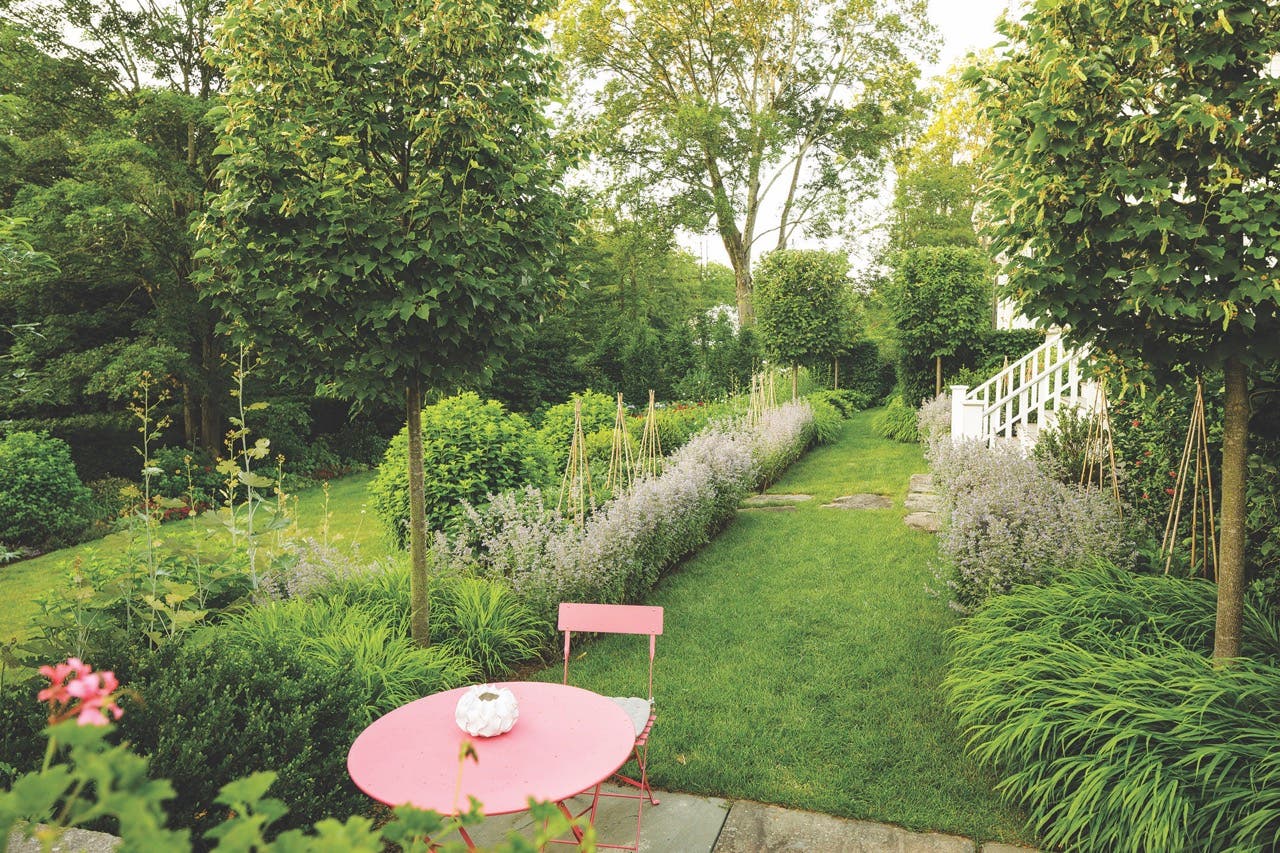
Features
Intersection of Nature and Art
As an aspiring fruit tree orchardist and longstanding vegetable gardener (even a onetime agricultural student), I sometimes quip I don’t grow anything I can’t eat, but that’s just to hint at the limits of my experience with landscape design. In their latest monograph, Intersection of Nature and Art, James Doyle Design Associates did a lot to open my horticultural eyes.
What drives this collection of 17 recent projects became clearer to me after reading the section Process/Analysis, where partner Justin Quinn explains how the firm likes to transform plants and hardscapes into “legible, clean shapes that are often juxtaposed against organic textures and forms.” Given how the projects range from new-built houses on virgin sites to remodels of existing houses with legacy landscapes, that’s quite a spread of contrasts to engineer.
In the Catskills section, for example, clients renovating a traditional, vernacular residence surrounded by hundreds of acres of Appalachian woodlands wanted to sensitively upgrade the property and add a garage. They also sought to preserve mountain views, as well as devise a long-range conservation plan. “Some of the most notable landscapes are not about exerting control over nature,” writes the firm, “but rather about responding respectfully to these surroundings.”
Conversely, in Meadowcroft, where a new, large, contemporary house replaced an earlier structure on a steep, residential parcel, the challenge was to remove invasive and outdated plants and introduce materials that would mitigate the impact of the architecture. Added to this was a call to improve the sustainability of the tricky site, including extensive use of green roofs, and create bioretention areas to manage water runoff.
The implications of such contrasts run even deeper in the section Across Geographies by James Doyle, which surveys not only recent commissions across the United States, but also historic properties in France, Italy, and Ireland. According to Doyle, when working on a project with a rich architectural history, the challenge is to “find the correct balance between conservation, restoration, and re-creation.” Here, he acknowledges the thinking of British architect and landscape designer Sir Geoffrey Jellicoe.
In a 1980 lecture, Jellicoe observed how inserting new gardens into old settings has parallels to updating a house so that it is “not as anachronistic [as] without all modern conveniences.” This raises questions about whether a historic garden should be treated as frozen in time or, conversely, thought of as an ongoing, continuous sequence, a continuum. A British Heritage landscape, for example (which might date to the Middle Ages) could, in the past, represent any one of a number of styles—even diametrically opposed styles, such as classical and romantic. Balancing past ideas with those of the present, he says, is “perhaps the most interesting and compelling challenge in garden design.”
When gardens are looked at as a continuum, however, Jellicoe suggests it opens up “the exciting idea of creative conservation” as an approach, especially for landmark landscapes. “The idea consists in a concept of historic landscape as a modern carpet with threads which the designer of to-day has woven into a virtually new composition.” The purpose, he says, is to “harmonize materials that in themselves might once have been in opposition.”
Heady stuff perhaps, and largely beyond the turf of a book where plants, and their dynamic use, take center stage over architecture or academics. In fact, central strengths of Intersection of Nature and Art are the prolific lists of plant species applied to each project, and the copious, beautiful photos and descriptions on how they are used. As the spring landscape season comes into full bloom, I’ll be trolling through those lists with a new appreciation, and planting some contrasts myself. TB
Gordon H. Bock is an architectural historian, instructor with the National Preservation Institute, and speaker through www.gordonbock.com.








